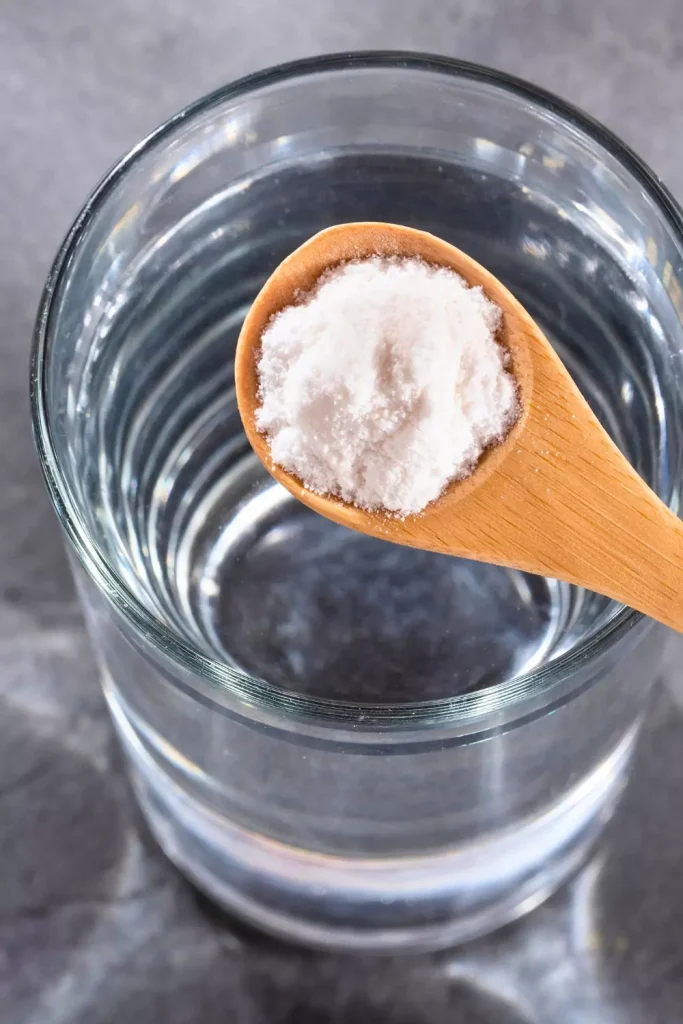Burnt pots happen when food sticks and carbonizes on the surface, usually because of high heat, lack of liquid, or forgetting to stir.
Ingredients like sugar and milk-based sauces burn quickly and can leave black, stubborn layers.
Different pot materials also react differently to heat.
Stainless steel is strong but can develop tough burnt spots; non-stick surfaces get damaged if overheated; and aluminum can warp or stain.
In this guide, we’ll explore the top 7 home remedies you can try to get them looking shiny and new again.
Top 7 Home Remedies to Clean Your Burnt Pot
1. Water + Baking Soda Boil
How it works:
Fill the pot with water, add a few tablespoons of baking soda, and bring it to a boil. Let it simmer for 10–15 minutes. The baking soda helps loosen burnt bits, making them easier to scrub away.

Pros: Simple, non-toxic, gentle on most materials.
Cons: Might not work on very thick burns.
Best for: Stainless steel and aluminum pots.
2. Vinegar + Baking Soda Soak
How it works:
Add a cup of vinegar and a cup of water to the pot. Bring it to a boil. Remove from heat and add 2–3 tablespoons of baking soda (it will fizz!). Let it sit for a few minutes, then scrub.
Pros: Powerful combination; vinegar helps dissolve stubborn spots.
Cons: Avoid on aluminum as vinegar can cause discoloration.
Best for: Stainless steel and enameled pots.
3. Liquid Dishwasher Detergent Boil
How it works:
Fill the pot with water, add a spoonful of liquid dishwasher detergent, and bring it to a gentle boil for 10 minutes. Let it cool, then scrub.
Pros: Effective on grease and tough burnt layers.
Cons: Chemical smell; make sure to rinse well.
Best for: Heavy-duty stainless steel or thick-bottom pots.
4. Salt + Cream of Tartar Paste
How it works:
Mix salt and cream of tartar with a bit of water to make a paste. Spread it over the burnt areas and let it sit for at least 15 minutes. Scrub with a sponge.
Pros: Gentle abrasion, natural ingredients.
Cons: Needs patience and a bit of elbow grease.
Best for: Most metal pots and non-stick (gently).
5. Ketchup or Lime Detox
How it works:
Apply a thick layer of ketchup or squeeze lime juice on the burnt area. Leave it for a few hours or overnight. The acid helps break down burnt residues.
Pros: Cheap, natural acids.
Cons: Slow, best for light burns.
Best for: Stainless steel, copper-bottom pots.
6. Dryer Sheet or Alka‑Seltzer Soak
How it works:
Fill the pot with warm water and add a dryer sheet or two Alka‑Seltzer tablets. Let it soak overnight. In the morning, scrub gently.
Pros: Requires minimal effort; works overnight.
Cons: Not always effective on very tough burns.
Best for: Light-to-medium burns on most types of pots.
7. Ammonia Overnight Soak
How it works:
Place a small amount of ammonia (about ¼ cup) into the pot, seal it inside a large trash bag or wrap it tightly, and leave it outside overnight. The fumes help loosen the burnt gunk.
Pros: Very powerful.
Cons: Strong smell, requires caution (always wear gloves and ensure good ventilation).
Best for: Extremely burnt stainless steel pots.
Conclusion
A burnt pot doesn’t mean the end of your favorite cookware. With these simple and effective home remedies, you can save money, help the environment, and enjoy cooking without worrying about the aftermath.
Start with the gentler methods first, and move to stronger solutions only if needed. Remember to always rinse thoroughly and take precautions with stronger chemicals like ammonia.
Your pot deserves a second chance — give it some love, and it will serve you delicious meals for many more years to come!